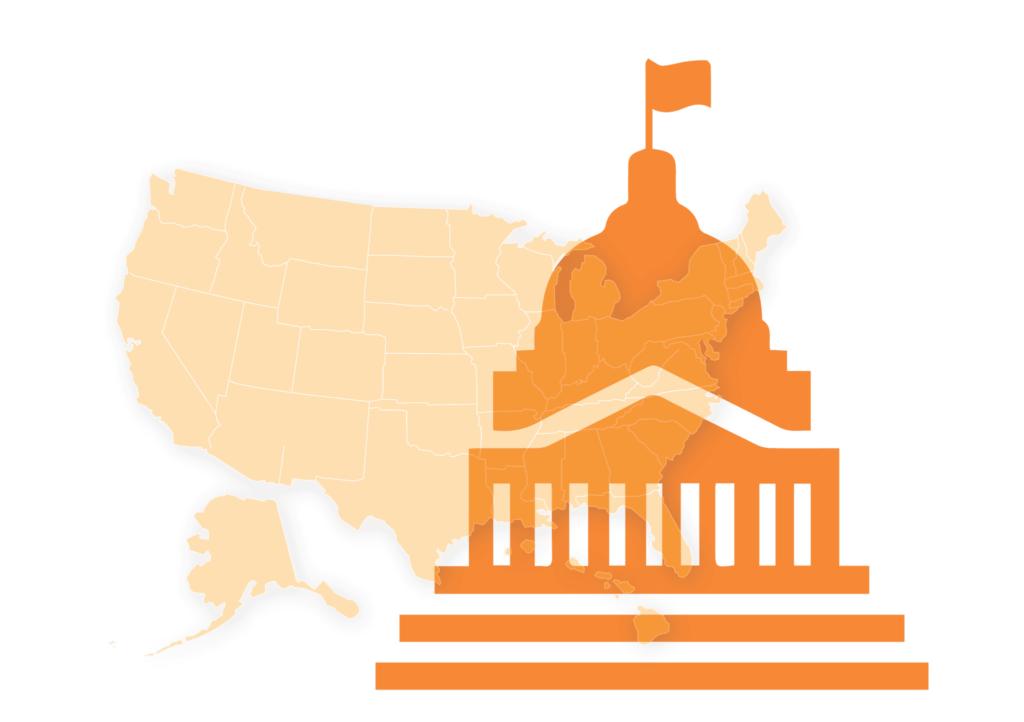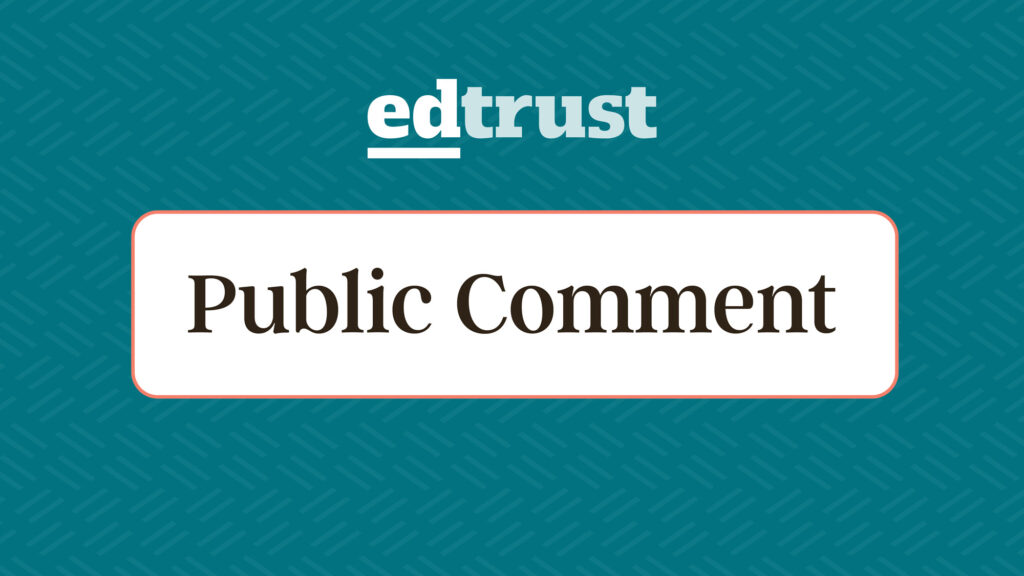Dear Ms. Siry:
As a collaboration of 59 national and state organizations seeking to advance educational equity and excellence through federal, state, and local policy and advocacy, the undersigned organizations welcome the opportunity to respond to the U.S. Department of Education’s (ED’s) request for public comments on its draft guidance, Frequently Asked Questions Impact of COVID-19 on 2021-2022 Accountability Systems Required under the Elementary and Secondary Education Act of 1965 (ESEA).
We recognize the immense challenges that state policymakers, school district leaders, educators, families, and students face every day as they respond to the ongoing and evolving challenges posed by COVID-19. These disruptions have disproportionately affected students of color, students living in poverty, students with disabilities, students learning English, and students experiencing homelessness.
ED plays a key role in supporting states and school districts by providing funding, technical assistance, and guidance to clarify how they may implement vital federal laws aimed at protecting underserved students. One of those laws, the Every Student Succeeds Act, includes critical tools—statewide accountability, school improvement, and public reporting systems—to ensure districts, schools, and students that need additional resources and support receive them. These systems rely on comparable data from statewide assessments and other measures, such as graduation rates, measures of college and career readiness, and chronic absenteeism, to shine a spotlight on opportunity and resource gaps so that states can direct resources to the communities and students who need them most.
Given uneven access to remote learning during COVID-19 school closures and interrupted learning time during the 2019-20 and 2020-21 school years, assessment data and other indicators collected during the 2021-22 school year provide leaders with a vital tool to identify the districts, schools, and students that need substantially more resources because they have been affected most by the pandemic.
We appreciate ED’s draft guidance reiterates the critical ESEA requirements for states to identify schools in need of supplemental resources and differentiated support on a regular basis—including following the 2021-22 school year. By designating schools needing comprehensive, additional targeted, and targeted support, they become eligible for additional federal school improvement funding (i.e., ESEA section 1003(a) funding), and they should receive additional state and school district technical assistance to design and implement evidence-based plans to address lost instructional time and other student and educator needs. As ED reiterates in the guidance, the primary objective of state accountability systems this year should be to use these systems to direct resources and supports to the schools and students who have been disproportionately harmed—academically, socially, and emotionally—by COVID-19 and to continue these supports even after COVID-19 relief funds have been spent. This fall will be the first opportunity for states to ensure their accountability systems reflect the additional resources students need as a result of the pandemic. Further, ED’s guidance helpfully notes ways in which ESEA gives states the discretion and flexibility they need to update their accountability systems, as needed, to account for the unique challenges schools are facing at this time and to ensure students receive the supports they need. Finally, we appreciate that ED’s guidance encourages the use of Elementary and Secondary School Emergency Relief funding for school improvement purposes under ESEA.
As always, we value the Department of Education’s commitment to providing robust support to states and school districts across the country. We look forward to reviewing and supporting state and district implementation of the final guidance and partnering with ED to ensure that all students, especially those underserved and those most impacted by COVID-19, receive a high-quality education.
Sincerely,
A for Arizona
A+ Education Partnership (Alabama)
Alabama PTA
All4Ed
America Succeeds
Association of American Educators
BEST NC
Bluum
Buffalo Public School’s District Parent Coordinating Council
Capital Region Chamber
CarolinaCAN
Children’s Education Alliance of Missouri
Collaborative for Student Success
Colorado League of Charter Schools
Data Quality Campaign
DelawareCAN
EdAllies
Educate Texas
Education Reform Now
Education Reform Now New York
Educators for Excellence
First State Educate
Florida PTA
GO Public Schools
GO Public Schools Fresno
GO Public Schools Oakland
GO Public Schools West Contra Costa
Great MN Schools
HawaiiKidsCAN
IDEA Public Schools
Illinois Network of Charter Schools
Innovate Public Schools
Kids First Chicago
KIPP Public Schools
Learning Heroes
National Alliance for Public Charter Schools
National Association of Charter School Authorizers
National Center for Learning Disabilities
National PTA
National Urban League
NewMexicoKidsCAN
Opportunity 180
Our Turn
Parent Impact
PAVE (Parents Amplifying Voices in Education)
Ready Education Network
Results for America
SchoolHouse Connection
StudentsFirstNY
Teach Plus
The Education Trust
The National Parents Union
The Oakland REACH
TNTP
Transform Education Now
U.S. Chamber of Commerce Foundation
UnidosUS
Urban League of Long Island, Inc
Washington Roundtable






 June 16, 2025 by
June 16, 2025 by